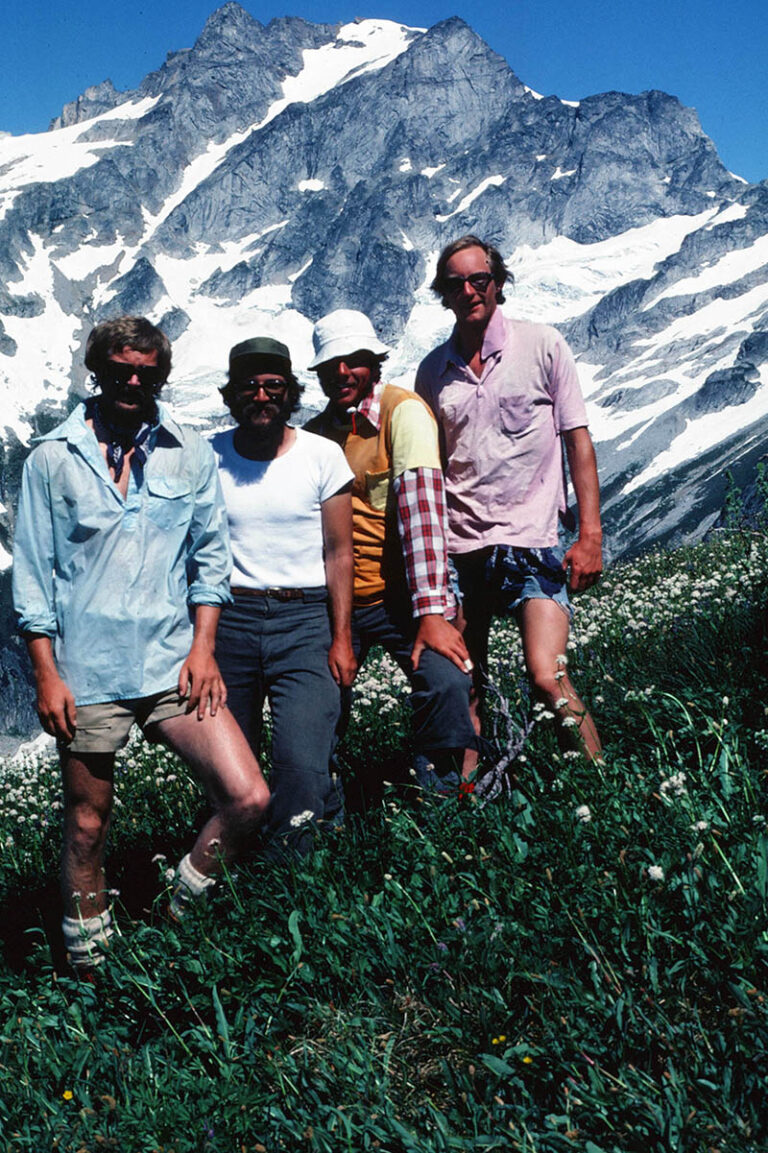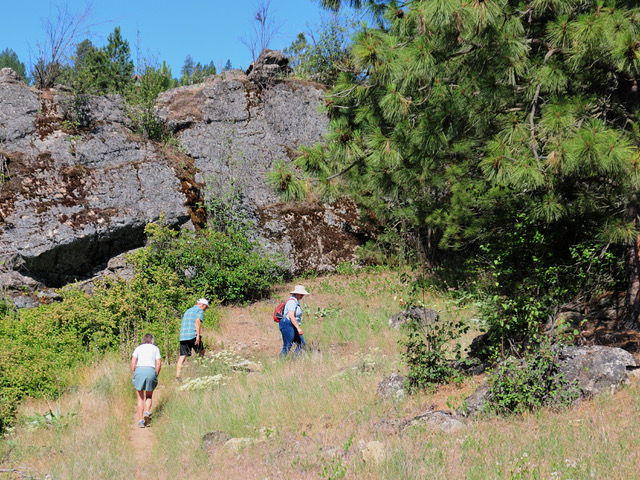This student essay was included in the feature story “Spokane Students Write From the Wilds of Yellowstone” by Derrick Knowles in the September-October 2021 issue.
Yellowstone’s Thermal Features
By Benson Side, elementary student at Pioneer School
Yellowstone National Park is home to four kinds of weird thermal features. The Earth is hot in Yellowstone because it is an active supervolcano caldera. Yellowstone is where half of the geysers in the world are found! There are approximately 500 geysers in Yellowstone National Park, and that’s a lot.
Geysers are cool (the water is not cool, though). They are activated by pressure and heat in a chamber below the ground. Water that collects there is heated up beyond boiling, which is extremely hot. It’s a big chamber with a little opening, kind of like a teapot. It builds up pressure until it can’t hold the pressure any more, and it goes ka-bluey!!!! There are two types of geysers: cone and fountain geysers. Fountain geysers are practically the same thing as a cone geyser underground. Cone geysers erupt in an upward spout from a mound or cone of sinter rock, but fountain geysers erupt from a hot spring. Fountain geysers look like a pool that has a bomb exploding under the water, if you can picture that.
Yellowstone’s hot springs are an amazing sight. They are beautiful puddles or pools of steaming water that often have colors. Those colors aren’t just for decoration, they are little baby bacteria that can only survive in different temperatures. The bacteria that needs the hottest water is dark blue, the second ring of color is turquoise and the second hottest, the third ring is yellow and is the third hottest, and the fourth ring is the fourth hottest and it is orange. These bacterias are called thermophiles, which means heat-loving. You are not allowed to swim in the hot springs because the oils on your skin will kill the bacteria, which is bad!
Mud pots are weird and satisfying. They are satisfying because they bubble slowly and make interesting sounds. Mud pots can be stinky because of the hydrosulfide that is dissolved in the water. Mud pots sometimes don’t have much color, but when they do have color they are called paint pots. They get their color from minerals that mix in the mud pots. Fumaroles are vents that steam because of geo-heated water below the surface of Earth’s crust. There is some water deep in the fumarole, which evaporates before it gets to the surface. Fumaroles are found in many sizes. I hope that someday you will go and see the awesome geology at Yellowstone. It is so worth the trip!
Editor’s Note: These student essays were printed as they were provided by Pioneer School and were unedited by Out There. To learn more about the school, visit Pioneerschool.com.

Every other year, 4th and 5th grade students from Pioneer School participate in Expedition Yellowstone, a National Park Service program where school groups get to choose a theme, such as history, ecology, and wildlife for a hands-on learning expedition. Pioneer School is a K-5 accredited, non-profit school for gifted and highly-capable learners in Spokane Valley.













